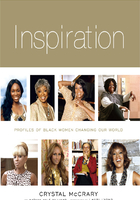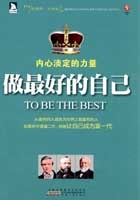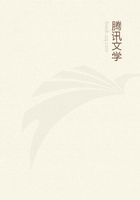WHAT IS POVERTY?
Get ready to learn about the surprising nature and breadth of the potential market among the world's poor.
It's shocking. After the world's rich nations invested more than $2.3 trillion over the past 60 years to end global poverty, billions of our fellow humans remain desperately poor.[1] Lest we succumb to insanity as Albert Einstein defined it — “doing the same thing over and over again and expecting different results” — it's essential that we wage any new war on poverty with a different battle plan.
We've learned three fundamental lessons from the failure of foreign aid to root out poverty and the limited success of independent development projects.
True development rarely comes from the outside. Top-down development programs administered by governments, international agencies, foundations, or big NGOs rarely work because they're so vulnerable to government corruption, bureaucratic inaction, the distance between the planners and the supposed beneficiaries, and both distrust and a lack of interest on the part of people who live at the grass roots.[2] True development, as evidenced by meaningful, community-wide lifestyle changes, comes almost exclusively through the mechanism of the market, as growing numbers of individual poor people make conscious decisions to take advantage of new products, services, and ideas that they come across at the grassroots level — and as they take what they produce to sell in the market to rich and poor customers alike.[3]
Giveaways breed dependence and self-doubt instead of change. Philanthropy isn't the answer, either. Despite the severely limited funds available, they're squandered on a great diversity of uncoordinated, small-scale efforts to address every problem under the sun. We can't donate our way out of poverty. Even Bill Gates, with $70 billion at his disposal, has referred to his wealth as a drop in the bucket in our $70 trillion global economy.[4]
Traditional approaches are ill-suited to fight poverty. Even the most promising and cost-effective conventional development projects fail to make real headway against poverty because there is never enough money — either from governments or from philanthropists — to take them to scale. Both government officials and philanthropists typically want their names attached to high-visibility projects. They tend to shun the long-term, behind-the-scenes efforts required to foster changes in fundamental attitudes among the poor. (In some cases, particularly in authoritarian governments, attitude change is the very last thing they want!)
To be sure, staff or boosters of the World Bank and the United Nations and many of those engaged in the private development establishment will shriek in protest at all three of these statements. In February 2012, the World Bank reported new poverty estimates revealing that “1.4 billion people in the developing world (one in four) were living on less than $1.25 a day in 2005, down from 1.9 billion (one in two) in 1981 … [and] that there has been strong — if regionally uneven — progress toward reducing overall poverty.” The pièce de resistance in the World Bank report was that, by 2008, the nations of the world were on target to meet the first of the Millennium Development Goals — halving by 2015 the incidence of extreme poverty as measured in 1990.[5]
Not so fast, the critics responded. One observed: “This is the current reality of global poverty as reported by the World Bank: almost a quarter of the developing world (22 percent) cannot meet their basic needs for survival, while not far from half of the population (43 percent) is trying to survive on less than $2 a day. … [U]sing $2 a day as the marker of extreme poverty would reveal a far less sanguine outlook. If a more realistic marker of $2.50 a day is used, twice as high as the current level [of $1.25], then the Bank's own data showed a slight increase in the number of poor between 1990 and 2005.”[6]
William Easterly, a former World Bank economist turned out-spoken critic, went further, asking, “Why don't you just ask people if they think they are poor? Gallup's World Poll does. In contrast to the World Bank global poverty rate of 25 percent (around which there were … uncertainties on the order of 40 percent of the original estimate): 33 percent worldwide say they don't have money for food; 38 percent say their living standards are poor, and 39 percent say they are ‘in difficulty.' So you are on safe ground saying, ‘there are lots of people in poverty.' But don't insult our intelligence with an exact number.”[7]
We cast our lot with Easterly and his fellow critics. But there's an even more poignant rebuttal to the legions of foreign-aid fans: In 1950, the population of the world was estimated at 2.6 billion people. The World Bank informed us in 2012 that the number of people who were living on $2 a day or less was 2.7 billion.
Is that progress? Not in our opinion!
TAKEAWAY #1:
We believe there is one sure way, and only one way, to foster genuine social change on a large scale among the world's poverty-stricken billions — by harnessing the power of business to the task.
Before we spell out exactly how we believe private capital and business expertise can be marshaled to meet this historic challenge, you need to know what we mean by poverty.
“Poverty” Doesn't Translate Easily
If you live in the United States, where virtually all the “poor” live in homes with running water, electricity, indoor plumbing, and refrigerators, and many own cars, color TV sets, smartphones, and designer running shoes, your understanding of poverty may be badly skewed. Poverty in the global context bears little resemblance to poverty as it has been understood in North America. The differences are both quantitative and qualitative.
Definitions of poverty by economists and officials worldwide span a wide range. For example, the official poverty line in rural China is RMB 2,300 (about $363).[8] The Indian central government defines poverty as income of 28.65 rupees per person per day or less in urban areas and 22.42 rupees in rural areas.[9] At the rate of exchange prevailing at the time of this writing, these figures represent about $0.52 in cities and $0.40 in the countryside (where most of India's 1.22 billion people still live). Thus, a village family of six, which is typical in most of India, would be classified as poor if its household income amounted to $2.40 per day or less.
The World Bank offers not one definition of poverty but several, all in terms of purchasing power parity in US dollars — but all of them are far above the official rates in India: $1 per day per person, $1.25, $1.45, $2.00, $2.50, and $10.00.[10] Two dollars per day per person is the benchmark most generally followed, and the one we use in this book.[11]
Numbers beg the question, though. What's far more important to know is how these figures translate into day-to-day living conditions. The authors of Portfolios of the Poor write of the poor that “on $2 or less a day[, t]hey manage to put food on the table, keep a roof over their heads, plan for medical emergencies, and even save for retirement.”[12] For rich-country readers accustomed to thinking of single-digit dollar amounts as pocket change, this is a reasonable place to start putting the numbers in perspective.
Conditions vary widely from region to region, from village to village, from village to town and city, and from family to family, so the statement from Portfolios of the Poor is by no means true everywhere. An estimated 925 million people go to bed hungry at night around the world.[13] That's more than one-third of the 2.7 billion who live on $2 a day or less — because so many of the poor experience episodic foot shortages, often while waiting for the harvest to come in. Hundreds of millions — including many of those who are malnourished or starving but also many who are not — are afflicted by debilitating disease or severe physical or mental disabilities, confined to conflict zones or refugee camps, subject to the whims of cruel governments, or otherwise prevented by circumstances from growing enough food or earning enough money to buy it for themselves, let alone their families. The “portfolios” of some who live on $2 a day may be barely adequate to support a minimal existence in many parts of the world, but for people earning much less, life is often truly harsh. However, it's also true that a large proportion of the poor live on the land, where they are sometimes able to grow a portion of the food necessary for themselves and their families — so that their meager cash income (usually from selling surplus crops, hiring out as day laborers, or running home-based businesses) provides a cushion to meet their needs for medicines, school fees and uniforms, modest home improvements, and other contingencies. Also, in much of the Global South, food may be available at a reasonable cost, and shelter and clothing constitute much less of a challenge than in regions with harsh winters.
Given so many variable factors, it's impossible to put a precise figure on the number of people worldwide who live below the subsistence level. The World Bank's best effort is to define the estimated 880 million who earn $1 a day or less as living in “extreme poverty.”[14]
But poverty isn't defined purely by economic factors. Poor people as we have come to know them in the Global South typically experience un-or underemployment; encounter barriers to opportunity based on their gender, race, ethnicity, or religion; lack some or all of the basic human needs, including clean water, nutrition, health care, education, clothing, and shelter; and, all too often, lose hope and lack even the most basic self-esteem. To date, poverty in these terms is still the defining circumstance in the lives of nearly two out of every five human beings on Earth. Surely, something can be done about this!
This is where we come in — convinced that the challenge of ending global poverty can be met only by tapping the power of business. We'll explore why we reached this conclusion in chapter 3.
注释:
[1]Officially called overseas development assistance, and what the rest of us term foreign aid, these investments have had little or no impact on the livelihoods of poor people in developing counties. See William Easterly, The White Man's Burden: Why the West's Efforts to Aid the Rest Have Done So Much Ill and So Little Good (New York: Penguin Publishing, 2006).
[2]This question is controversial among economists, development specialists, and government officials. There are two clearly defined poles of thought, encapsulated in books written by economists William Easterly and Jeffrey Sachs. Easterly's book, The White Man's Burden, makes the case for bottom-up action, but it doesn't say much about practical ways to do it. Sachs, the architect of the Millennium Development Goals, advocates large-scale government-to-government assistance in The End of Poverty: Economic Possibilities for Our Time (New York: Penguin Press, 2005). We don't find Sachs's views convincing, despite his peerless credentials and unusually broad experience. Easterly writes about the world as we've seen it; Sachs doesn't. For additional perspective on the question of the value of foreign aid, see Dambisa Moyo, Dead Aid: Why Aid Is Not Working and How There Is a Better Way for Africa (New York: Farrar, Straus and Giroux, 2009). However, this question is broader than foreign aid, since we referred to “top-down programs” in general. Although top-down foreign aid programs almost never work, there are exceptions among efforts launched by other actors. For example, the Thai activist Mechai Viravaidya, known widely as “Dr. Condom,” played a leading role in the dramatic fall in Thai birth rates from the 1970s to the 1990s by undertaking a brilliant nationwide marketing program to promote the use of condoms.
[3]One very notable exception proves the rule, in our opinion: China — a single nation that alone claims to have lifted at least 300 million people out of poverty in three decades. Chinese government statistics are notoriously unreliable, so the real figure is probably much smaller. Nonetheless, the country has achieved monumental economic changes since the launch of Deng Xiaoping's liberalization policy in the late 1970s. In rural areas, the decollectivization of agriculture — possible only because of China's authoritarian single-mindedness — allowed small farmers to grow for the market, creating the engine for rapid economic growth and providing opportunities for millions of rural people to escape poverty. (The Chinese approach to poverty is unlikely to be applicable to other societies in the absence of a powerful authoritarian government combined with a commitment to encourage market forces.) Paradoxically, this has provided the principal justification for optimistic statements about humanity's progress in recent times, such as Fareed Zakaria's widely noted Harvard College commencement address on May 24, 2012: “The United Nations estimates that poverty has been reduced more in the past 50 years than in the previous 500 years. And much of that reduction has taken place in the last 20 years.”
[4]Seventy billion dollars is about one one-thousandth of the global GDP and a much smaller fraction of the world's accumulated financial wealth.
[5]World Bank, “World Bank Updates Poverty Estimates for the Developing World,” Research at the World Bank, February 17, 2012,
[6]Adam Parsons, “Should We Celebrate a Decline in Global Poverty?,” Share the World's Resources: Sustainable Economics to End Global Poverty, March 16, 2012,
[7]William Easterly, “Don't cite global numbers unless you know they're trustworthy (They Usually Aren't),” AidWatch, January 21, 2010,
[8]“Life at the Bottom of the Middle Kingdom,” Economist, December 2, 2011, Also, “China Population below Poverty Line,” Index Mundi,
[9]“Planning Commission Further Lowers Poverty Line to Rs.28/Per Day,” India Today (New Delhi), March 19, 2012.
[10]World Bank Development Indicators, 2008. Almost half the human race lives on $2.50 a day or less. At least 80 percent lives on $10 a day or less. However, these figures need to be taken with a generous helping of salt. First of all, they are averages for the world as a whole, concealing dramatic differences from one place to another. Equally important, the World Bank poverty indicators are based on purchasing power parity (PPP) as of 2005. PPP is a measurement that takes into account the greater buying power of the US dollar in poor countries. PPP is calculated country by country for the economy as a whole, taking into account consumption habits that are totally beyond the reach of poor people. A poverty-based PPP would look quite different. Scholars are issuing dueling papers on this obscure subject that bears so directly on international policy choices. We are among those who are skeptical about the value of PPP.
[11]These numbers can lead to massive confusion. Using one approach, the theory of purchasing power parity (PPP) implies that $1 will buy about $2 worth of goods in India currently. However, other methods lead to larger multipliers than 2:1 — as high as 5:1. Since PPP is an inherently inaccurate theory that no doubt overprices goods in poor countries, we assume that $1 will buy $5 worth of goods of the sort that poor people buy in India. Taking this argument a step further, we arrive at $2 a day per family for the poverty line, at least in India. We believe that's a fair estimate, since the World Bank standard of $2 a day per person in PPP is roughly equivalent to $10 per day in purchasing power in India.
[12]Daryl Collins and others, Portfolios of the Poor: How the World's Poor Live on $2 a Day (Princeton, NJ: Princeton University Press, 2009).
[13]This figure is for 2010. United Nations Food and Agriculture Organization (FAO).
[14]World Bank Development Indicators, 2008.














